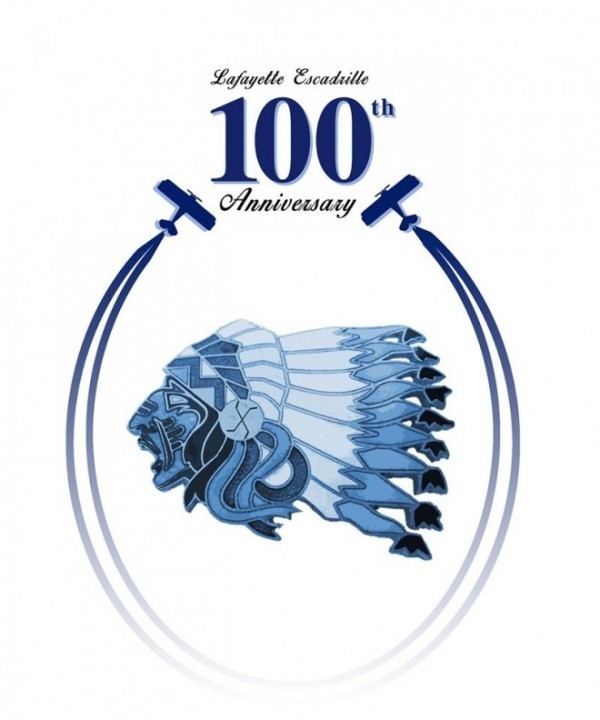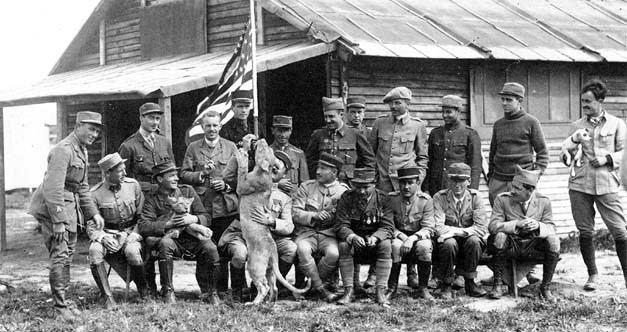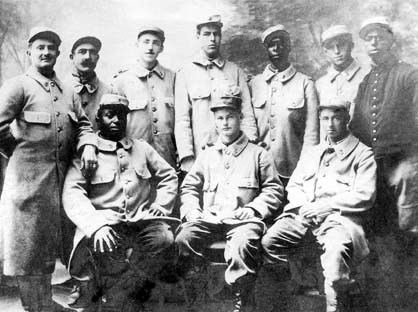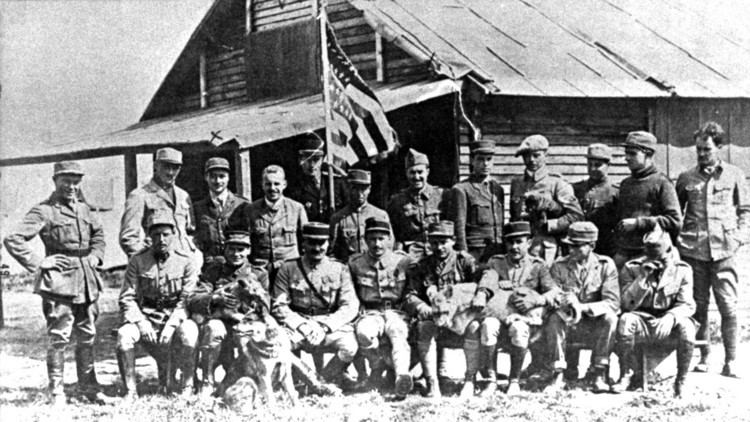Active 1916 Type Fighter Squadron | ||
 | ||
The Lafayette Escadrille (French: Escadrille de Lafayette) was an escadrille of the French Air Service, the Aéronautique Militaire, during World War I composed largely of American volunteer pilots flying fighters. It was named in honor of the Marquis de Lafayette, hero of the American and French revolutions.
Contents
- History
- Combat
- Casualties
- Members
- French officers
- American pilots
- Tributes
- Fictional accounts
- Rif War
- References

History

Dr. Edmund L. Gros, a founder of the American Hospital of Paris and organizer of the American Ambulance Field Service, and Norman Prince, an American expatriate already flying for France, led the efforts to persuade the French government of the value of a volunteer American air unit fighting for France. The aim was to have their efforts recognized by the American public and thus, it was hoped, the resulting publicity would rouse interest in abandoning neutrality and joining the fight. Authorized by the French Air Department on March 21, 1916, the Escadrille Américaine (Escadrille N.124) was deployed on April 20 in Luxeuil-les-Bains, France.

Not all American pilots were in Lafayette Escadrille; other American pilots fought for France as part of the Lafayette Flying Corps.

The squadron was then moved closer to the front to Bar-le-Duc. A German objection filed with the U.S. government, over the actions of a supposed neutral nation, led to the name change to Lafayette Escadrille in December 1916, as the original name implied that the U.S. was allied to France rather than neutral.
The unit's aircraft, mechanics, and uniforms were French, as was the commander, Captain Georges Thénault. Five French pilots were also on the roster, serving at various times. Raoul Lufbery, a French-born American citizen, became the squadron's first, and ultimately their highest scoring flying ace with 16 confirmed victories before the pilots of the squadron were inducted into the U.S. Air Service.
Two unofficial members of the Escadrille Américaine, the lion cubs named Whiskey and Soda, provided countless moments of relief from battle stress to fliers.
Combat
The first major action seen by the squadron was 13 May 1916 at the Battle of Verdun and five days later, Kiffin Rockwell recorded the unit's first aerial victory. On 23 June, the Escadrille suffered its first fatality when Victor Chapman was shot down over Douaumont. The unit was posted to the front until September 1916, when the unit was moved back to Luxeuil-les-Bains in 7 Army area. On 23 September, Rockwell was killed when his Nieuport was downed by the gunner in a German Albatross observation plane and in October, Norman Prince was shot down during air battle. The squadron, flying the Nieuport 11 scout, suffered heavy losses, but its core group of 38 was rapidly replenished by other Americans arriving from overseas. So many volunteered that the Lafayette Flying Corps was formed and many Americans thereafter serving with other French air units such as Michigan's Fred Zinn, who was a pioneer of aerial photography, fought as part of the French Foreign Legion and later the French Aéronautique militaire. Altogether, 265 American volunteers served in the Corps.
On 8 February 1918, the squadron was disbanded and 12 of its American members inducted into the U.S. Air Service as members of the 103rd Aero Squadron. For a brief period it retained its French aircraft and mechanics. Most of its veteran members were set to work training newly arrived American pilots. The 103rd was credited with a further 45 kills before the Armistice went into effect on 11 November. The French Escadrille SPA.124, also known as the Jeanne d'Arc Escadrille, continued Lafayette Escadrille's traditions in the Service Aéronautique.
Casualties
Nine pilots died in the Lafayette Escadrille while others perished after leaving the unit. More sustained non-fatal injuries. The planes flown were flimsy, and not as safe as those of later years. Engines and other parts failed, and machine-guns often jammed when they were needed. One man asked to be moved back to his infantry unit, where "he could be safe." The first pilot to be killed in action was Victor Chapman. Edmond Genet, became the first American casualty of World War I following the U.S. entry into the war. Other Americans had died previous to the U.S. declaration of war, but since Genet had been active in the Escadrille since before the U.S. entry into the war, his death only a few days after the U.S. declaration of war made him the first official U.S. casualty.
Members
There is some confusion between pilots who were a part of the Lafayette Escadrille or the Lafayette Flying Corps, especially in the film Flyboys. These five French officers and 38 American pilots (also known as "The Valiant 38") were part of the Lafayette Escadrille.
French officers
American pilots
A † symbol indicates that the individual was killed in action, including those who subsequently entered the Air Service, or died of wounds received.
Tributes
Fictional accounts
The story of the Lafayette Escadrille has been depicted in three feature films:
The Lafayette Escadrille also appears in "Attack of the Hawkmen", an episode of The Young Indiana Jones Chronicles in which Indy is temporarily assigned to the group as an aerial reconnaissance photographer.
The exploits of the Lafayette Escadrille are also captured in several works of historical fiction including: Falcons of France by Charles Nordhoff and James Norman Hall (1929) and To the Last Man by Jeffrey Shaara .
Rif War
In the mid-1920s, France recruited some 10 former pilots of the Lafayette Escadrille for service in the French Army of Africa, aiming to forestall American public and diplomatic support for the Rif tribes rebelling against French and Spanish colonial rule. The pilots were inducted into the French Foreign Legion in July 1925, where they formed the Chérif Squadron. Public protests in the United States led to the squadron's dissolution in 1925.
